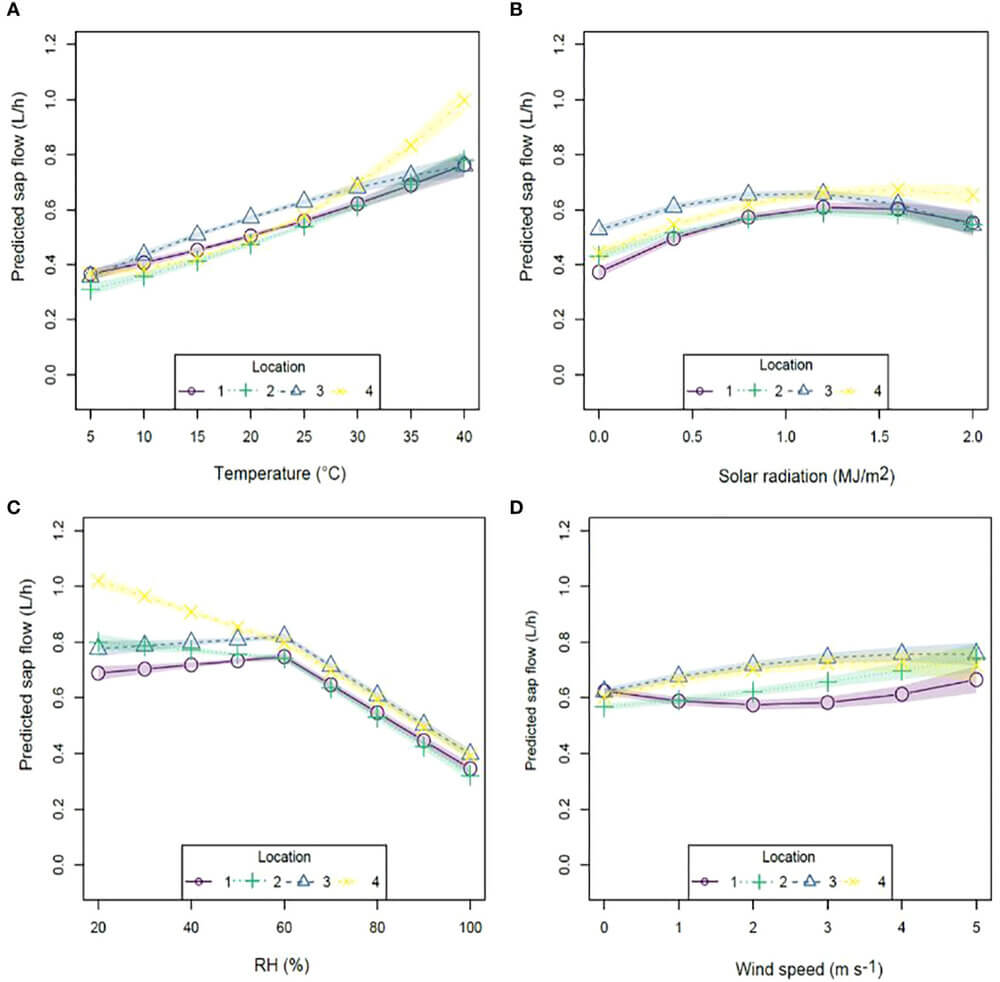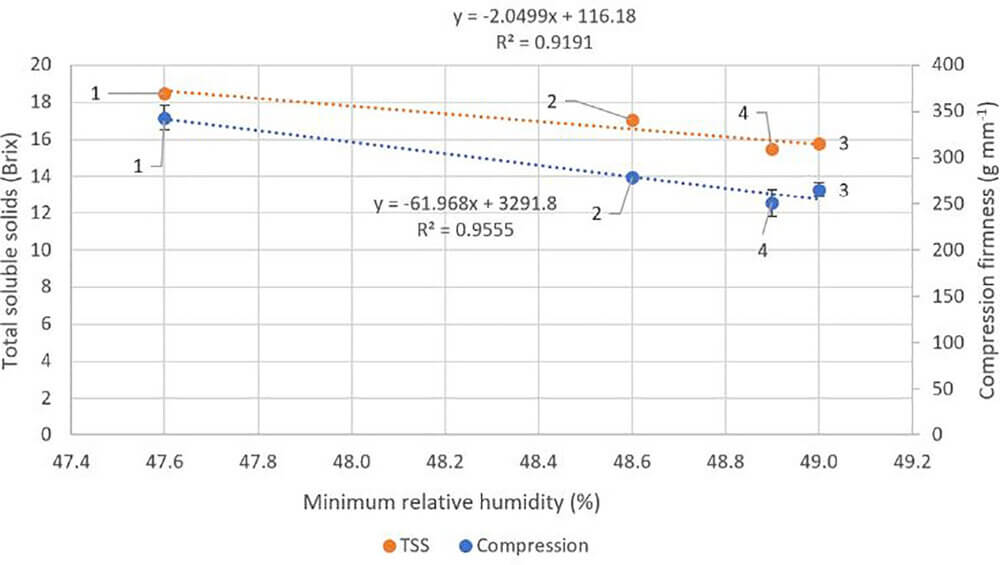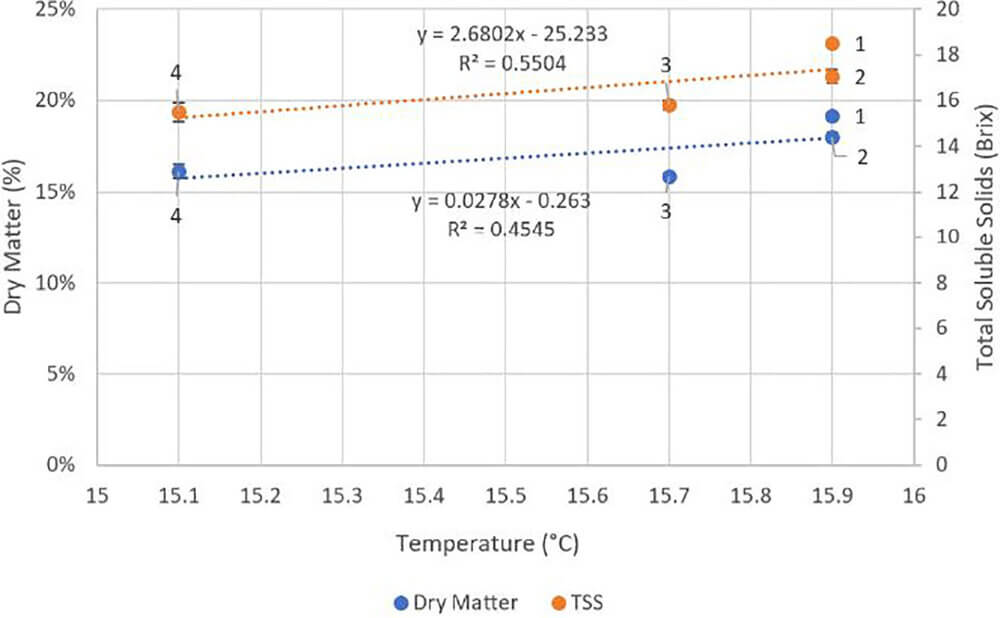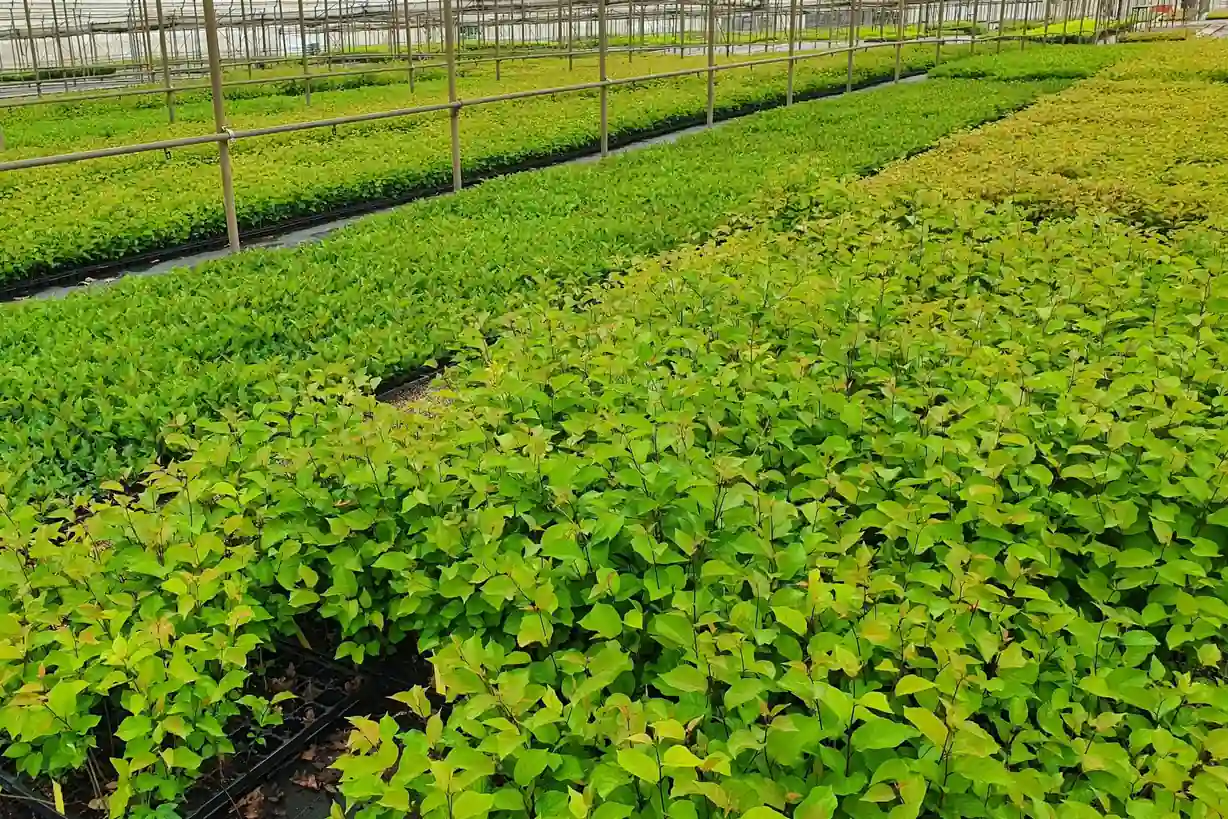Cover systems reduce the likelihood of adverse climatic effects on intensive fruit production, but at the same time they change the microclimatic conditions of the growing environment. These systems have been seen to increase temperature and relative humidity and decrease light intensity, with negative effects on fruit quality at harvest.
However, little is known about the effects of self-ventilating cover systems on both plants and fruits. Therefore, the study conducted by researchers at the University of Tasmania (Australia) aimed to examine the effects of these modern cover systems on the microclimate, water uptake and quality of fruit produced in covered sweet cherry orchard.
Within a 21 ha VOEN auto-vented covered orchard, four zones were selected at different altitudes, numbered 1 to 4 (125, 114, 111, 102 m above sea level, respectively), with zones 1 and 2 located in the innermost part of the orchard, while zones 3 and 4 were closest to the borders.

Each zone was equipped with sap flow sensors and meteorological stations. The effect of individual climatic parameters (temperature, relative humidity, solar radiation, and wind speed) on tree sap flow in each of the four zones was then predicted using generalized additive models (GAM).

In contrast to the lower elevation zones (zones 3 and 4), the higher elevation zones (zones 1 and 2) had slightly higher mean and maximum temperatures and lower mean relative humidity (RH) values. Predicted sap flow was highly correlated (r2 = 0.92) with time regardless of the area considered.
 Figure 1. Modeled sap flow fit for (A) temperature; (B) solar radiation; (C) relative humidity and (D) wind speed using the nonlinear model (Equation 2) by condition at 12 pm. Common scaling.
Figure 1. Modeled sap flow fit for (A) temperature; (B) solar radiation; (C) relative humidity and (D) wind speed using the nonlinear model (Equation 2) by condition at 12 pm. Common scaling.
Even though time alone predicts about 90 percent of water use by trees, the model, that held constant climatic parameters, revealed significant and distinct responses of sap flow to temperature, relative humidity, solar radiation, and wind. However, changes in temperature and relative humidity had the greatest impact on tree water uptake.
Among the most interesting findings is that sap flow of sweet cherry continues to increase at high temperatures, while high light intensity induces a decrease in sap flow, increasing the understanding of the control mechanism of this process. In addition, the substantial reduction in xylematic fluxes above the critical threshold of 60 % RH may contribute to the decrease in fruit flesh firmness because of lower calcium uptake in the fruits.
 Figure 2. Effect of mean minimum relative humidity at each of the four locations across an altitude/distance from PCS boundary gradient on mean fruit compression firmness and mean total soluble solids (TSS). At each location n = 60, 30 fruits per tree. Bars represent one standard error for each location. PCS, protected cropping system.
Figure 2. Effect of mean minimum relative humidity at each of the four locations across an altitude/distance from PCS boundary gradient on mean fruit compression firmness and mean total soluble solids (TSS). At each location n = 60, 30 fruits per tree. Bars represent one standard error for each location. PCS, protected cropping system.
Fruits harvested at locations 3 and 4 (in the inner part of the orchard) had higher values of dry matter (18.2%), total soluble solids (17.8%) and flesh firmness (311.3 g mm-1) than fruits harvested at locations 1 and 2 (closest to the boundary), with respective values of 16.1%, 15.7% and 258.3 g mm-1.
 Figure 3. Effect of average temperature at each of the four locations across an altitude/distance from PCS boundary gradient on fruit dry matter content and total soluble solids (TSS). At each location n = 60, 30 fruits per tree. Bars represent one standard error for each location. PCS, protected cropping system.
Figure 3. Effect of average temperature at each of the four locations across an altitude/distance from PCS boundary gradient on fruit dry matter content and total soluble solids (TSS). At each location n = 60, 30 fruits per tree. Bars represent one standard error for each location. PCS, protected cropping system.
The improvement in fruit quality characteristics (DMC, TSS and firmness) in zones 3 and 4 (at the higher elevations and further from the orchard boundary) compared to fruit in zones 1 and 2 (at the lower elevations and closer to the boundary), were characterized by slightly higher average temperature and lower relative humidity conditions, indicating that the microclimate developed under the self-ventilated cover systems create a more favourable environment for fruit quality than the conditions typically developed under the non-ventilated systems.
Fonte: Stone, Close, Bound, Corkrey, Orchard microclimate, tree water uptake and sweet cherry fruit quality under protected cropping, Frontiers in Plant Science, 13/2022 | https://doi.org/10.3389/fpls.2022.993817
Melissa Venturi
University of Bologna (IT)
Cherry Times - All rights reserved















